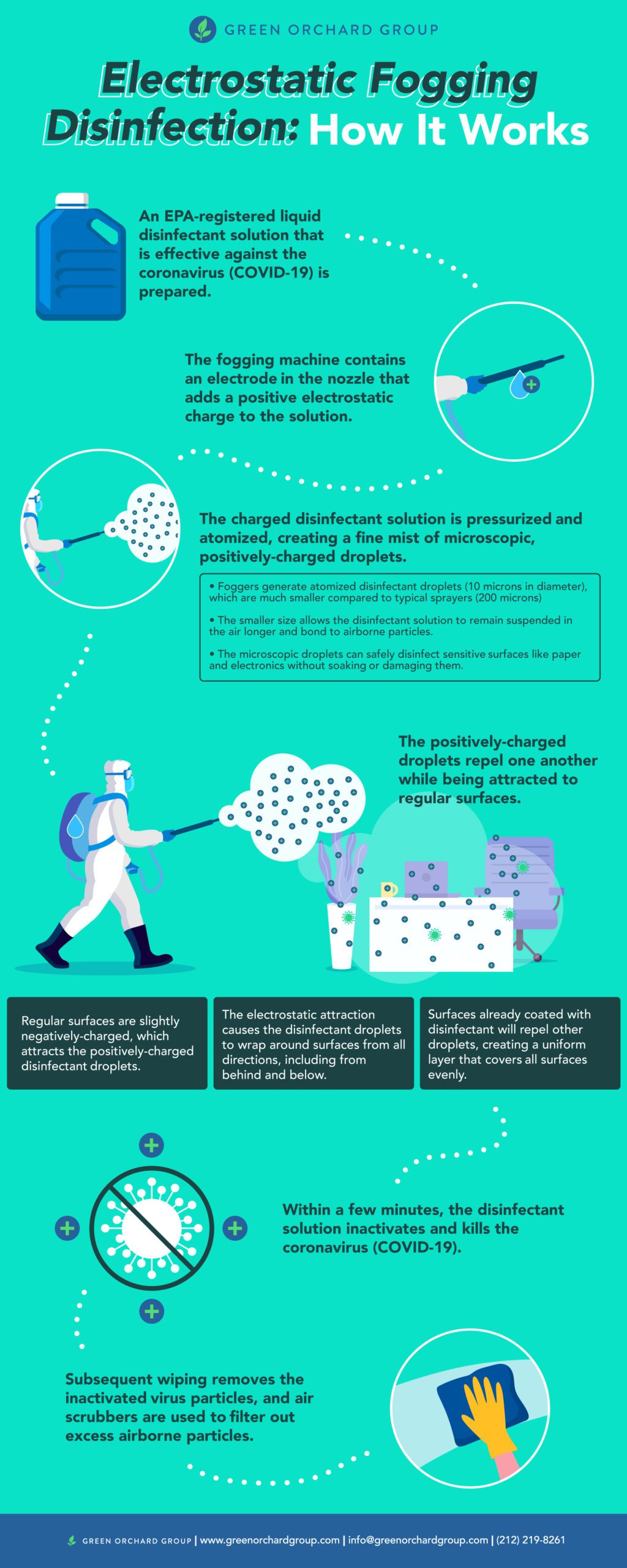Electrostatic Fogging Disinfection
Electrostatic fogging technology is an effective and efficient way to apply a disinfectant solution over large areas in a relatively short period of time. In NYC, many residents and businesses have turned to electrostatic fogging services to quickly and reliably sanitize surfaces in their homes, offices, schools, and other facilities.
Person-to-person transmission and aerosol transmission are known to be the most common methods by which coronavirus spreads. However, studies have shown that the coronavirus can linger and remain viable on certain surfaces for periods of up to several days, especially in places which an infected person has had contact with.
Therefore, the timely decontamination of high-risk areas where there has been a confirmed or suspected case of COVID-19 is an important part of maintaining a safe home or workplace environment.
Facts about Electrostatic Fogging
- Compared to regular cleaning methods, electrostatic technology is safer, more thorough, and more efficient at disinfecting surfaces from COVID-19.
- Foggers generate atomized disinfectant droplets (10 microns in diameter) which are much smaller compared to typical sprayers (200 microns).
- The smaller droplet size allows the disinfect solution to remain suspended in the air longer and bond to airborne particles.
- The microscopic droplets can safely disinfect sensitive surfaces like paper and electronics without soaking or damaging them.

How Electrostatic Fogging Works
- An EPA-registered liquid disinfectant solution that is effective against COVID-19 is prepared.
- The fogging machine contains an electrode in the nozzle that adds a positive electrostatic charge to the solution.
- The charged disinfectant solution is pressurized and atomized, creating a fine mist of microscopic, positively-charged droplets.
- The positively-charged droplets repel one another while being attracted to regular surfaces.
- Regular surfaces are slightly negatively-charged, which attracts the positively-charged disinfectant droplets.
- The electrostatic attraction causes the disinfectant droplets to wrap around surfaces from all directions, including from behind and below.
- Surfaces already coated with disinfectant will repel other droplets, creating a uniform layer that covers all surfaces evenly.
- Within a few minutes the disinfectant solution inactivates and kills the coronavirus.
- Subsequent wiping removes inactivated virus particles, and air scrubbers can be used to filter out excess airborne particles.
